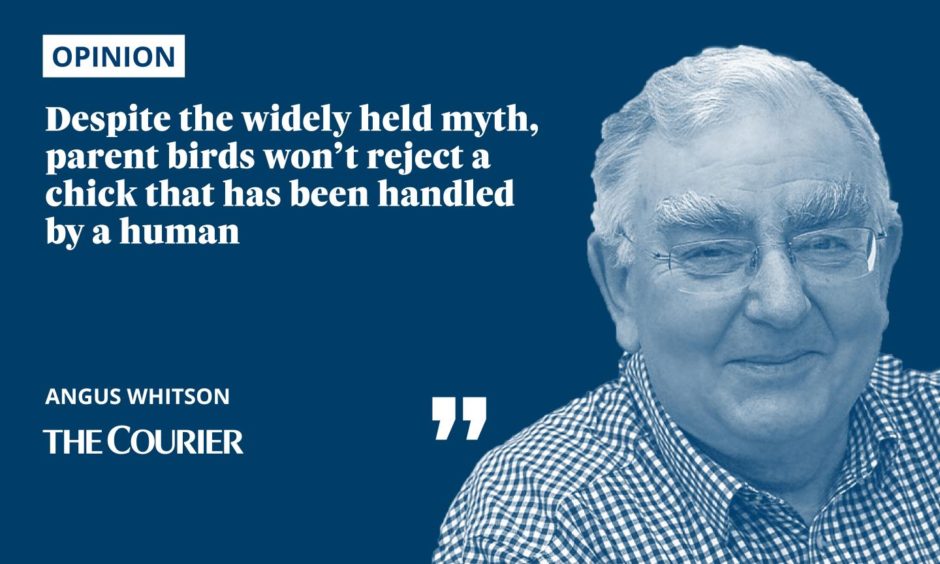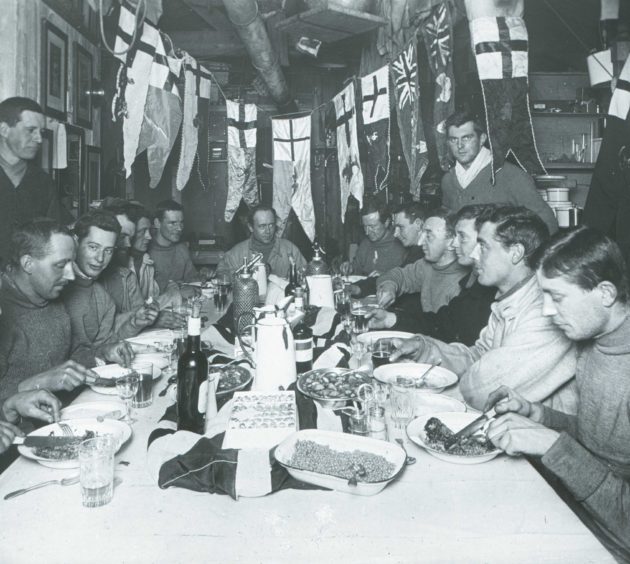At this time of year when birds are nesting and raising their broods there are always some chicks which land in trouble or appear to do so.
Following my comments last week about young starlings invading our garden to feed, I had an inquiry about what to do with an apparently abandoned fledgling bird which a reader found sitting on her lawn.
The first thing to bear in mind is that chicks that have fledged are usually better able to look after themselves than we think.
They may still be dependent on the parents feeding them but are not so vulnerable as they appear.

Unless they are in immediate danger from cats or dogs or a bird of prey, and it is safe to move the chick to the nearest hedge or other thick cover, they are best left alone.
The parent birds won’t be far away and, despite the widely held myth, parent birds won’t reject a chick that has been handled by a human.
Unfledged chicks – ones with their eyes closed that are not well feathered – still sometimes manage to clamber out of the nest and fall to the ground.
In these cases, put the chick back in the nest or, if it is inaccessible, call the RSPB or your local wildlife rescue centre for advice.
Night flyers
I’ve always walked my dogs last thing at night and, looking back, the evening conditions are very changed from the early days.
In the warm summer evenings, when the wind had dropped away and everything was still, I’d be walking through clouds of mosquitoes waiting for fresh meat – me and the dogs – to come their way for supper.
If it was dark enough to need the torch I’d attract night flying moths and Daddy Longlegs which blundered into my head and face.
And almost always bats were hawking, as it is called, in the dusk for their insect prey.
It’s different now – the numbers of night flying insects have greatly declined and this is having a direct effect on the numbers of bats, which feed exclusively on them.
Although bats have reasonable eyesight they catch their food using their own specialised form of bat radar.
Emitting high-pitched ultrasonic squeaks out of range of human hearing, the bats receive echoes bounced back from objects in their flight path.
The decline of one species has led to the decline of another
So sophisticated is their hearing that they can differentiate between obstacles they must avoid and the insects they are hunting.
The decline of one species has led to the decline of another.
The reasons, as ever, are the claims of agriculture and the need to feed the populace, and the claims of nature and the need to maintain her family of species for the benefit of future generations.
Sometimes such competing claims are difficult to reconcile.
Another Scot of the Antarctic
Idly wondering which of the green list holiday destinations the Doyenne and I might jet off and escape to – it was all just in the mind – I hit upon the South Orkney Islands in the Antarctic Southern Ocean.
The Whitson family have a proprietorial interest in Laurie Island, one of the four main islands of the archipelago.
My great-uncle, Sir Thomas Whitson, was an Edinburgh accountant and friend of William Speirs Bruce, naturalist, polar scientist and oceanographer – Scotland’s most eminent and Britain’s least known polar explorer.
Bruce’s scientific research is seen today as laying the foundations of our modern study of climate change.
Bruce was turned down when he applied to join Commander (as he then was) Scott’s 1901-1904 British National Antarctic Expedition.
Not one to be put off – and perhaps as a poke in the eye for Scott’s expedition which had so lightly dismissed him – Bruce organised and led the Scottish National Antarctic Expedition 1902-1904.
Sailing from Scotland in November 1902 he headed south to spend six weeks charting the Weddell Sea.
By the end of March 1903 he had found a protected anchorage on the south side of Laurie Island for his ship, Scotia, to see out the ice-bound winter.
Whitson territory
It has long been the practise of explorers to name newly discovered territories and their geographical features after royalty, sponsors, members of their expeditions and friends and relatives.
In appreciation of his friend Thomas B Whitson’s contribution to the expedition as Honorary Treasurer, Bruce named a peninsula on Laurie Island, Cape Whitson.
In the course of my family reminiscing I discovered that since April 1994 dogs are no longer allowed on Antarctica.
Sled dogs played an important part in Antarctica’s exploration history. I knew all about Amundsen’s dependence on sled dogs in his dash to be first to reach the South Pole in 1911.
But the Environmental Protocol (Conservation of Antarctic Plants and Animals) banned all non-native species except humans from Antarctica.
Non-native huskies, which I would have thought were environmentally friendly, have been replaced with non-native skidoos which run on fossil fuel. The logic behind such a directive might seem puzzling.











